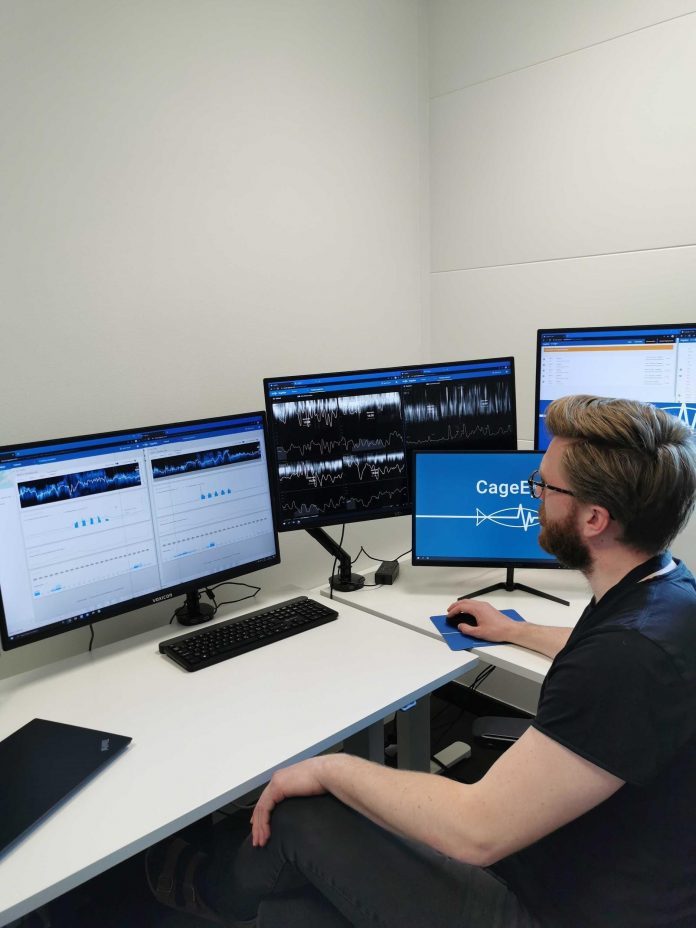Technology has made it possible to know when young salmon, called smolt, are ready to be fed regular meals. This technology can change the whole production cycle of the salmon, as it is crucial that the smolt is feed right from the beginning.
“The smolt have always, in their own way, been trying to tell us when they’re hungry, but until now we’ve not understood what they’ve been saying,” says feeding specialist Mattis Severberg from CageEye in a press release.
Aquatech company CageEye followed smolt behavior in four cages over a period of 90 days at a commercial site located on the coast of Western Norway. Behavioural analysis and machine learning algorithms enabled CageEye scientists to detect changes in behaviour and feeding responses that indicate, when the smolt are ready for meal-based feeding regimes.
CageEye’s hydroacoustic sensors make it possible to observe the behaviour of the smolt in sea cages, by monitoring how the biomass moves and schools. Data from the observations is processed using machine learning software. Along with insight from expert fish biologists, the analysis makes it possible for farmers to understand the smolts’ needs, thereby determining exactly when preference is starting to change from continuous feeding to meal-based feeding.
“Now we have objective measurements and strong indicators of when it is the right time to make that change, based on actual fish behaviour, instead of using generic parameters such as weight or days in the sea,” says Severberg.
Knowing the exact time of feeding is crucial for the growth of the salmon during the rest of the production cycle, explaines Dr. Øyvind Korsøen, a biological advisor in CageEye with a PhD in salmon behavior.
“The goal is to start the transition when the fish are ready. You don’t want to start with fewer, separated meals too early, given this risks underfeeding the fish and creating weight deviations if the fish are unable to capture sufficient feed pellets under such a regime. However, if you start too late, you risk higher feed waste and FCR (Feed Conversion Ratio). To make it more complicated, the right time for the transition can differ from cage to cage on the same site,” added Dr Korsøen.


